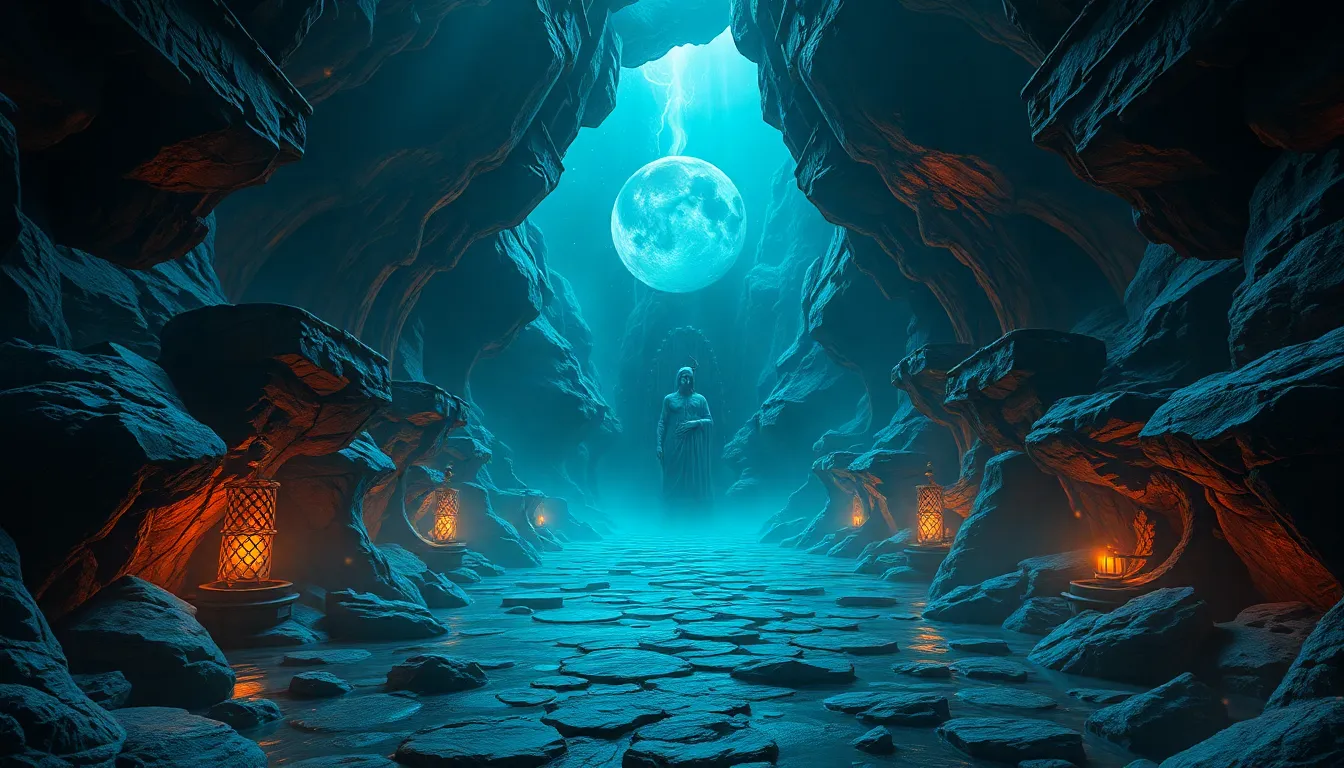Legends of the Underworld: The Myths That Shape Our Destiny
Introduction to Underworld Myths
The concept of the Underworld has fascinated humanity for millennia, representing a realm that exists beyond the living world. In various cultures, the Underworld serves as a place of judgment, rest, or eternal torment, reflecting the beliefs and values of the societies that conceive them. Myths surrounding the Underworld are not merely tales of fantasy; they are profound narratives that shape human behavior, moral values, and existential beliefs.
These myths often explore themes of life, death, and the afterlife, influencing how individuals perceive their actions and consequences. The stories serve as guides, providing insights into the human condition and the universal quest for meaning.
The Underworld in Ancient Civilizations
Different ancient civilizations have portrayed the Underworld in unique ways, each reflecting their cultural context and worldview. Here are some notable perspectives:
- Greek Mythology: The Underworld, ruled by Hades, is a place where souls go after death. It is divided into different regions, including the Elysian Fields for the virtuous and Tartarus for the wicked.
- Egyptian Mythology: The Underworld, known as Duat, is a complex realm where the deceased undergoes judgment by Osiris. The journey involves various trials, ultimately leading to either a peaceful afterlife or eternal punishment.
- Mesopotamian Mythology: The Underworld, often referred to as Kur, is a dark and dreary place ruled by Ereshkigal, where all souls go, regardless of their earthly deeds.
Key figures such as Hades, Osiris, and Ereshkigal illustrate the diversity of beliefs about the Underworld, emphasizing its importance in understanding life and death in these ancient cultures.
The Role of the Underworld in Moral and Ethical Teachings
Myths of the Underworld serve as moral compasses, conveying essential lessons about virtue, sin, and the consequences of one’s actions. These narratives often highlight the following:
- The importance of living a righteous life to secure a favorable afterlife.
- The belief that one’s actions in life have direct consequences in the afterlife.
- Societal values reflected in the depiction of rewards and punishments in the Underworld.
For instance, the story of Hades and Persephone teaches about the cyclical nature of life and death, while the Egyptian myth of Osiris underscores themes of resurrection and moral judgment.
Famous Legends of the Underworld
Many legends have emerged from the depths of the Underworld, each rich with symbolism and meaning. Here are three prominent examples:
Hades and Persephone
This Greek myth tells the story of Hades abducting Persephone, the daughter of Demeter. The tale explores themes of love, loss, and the changing seasons, as Persephone’s annual return to the surface symbolizes the rebirth of nature.
Osiris and Isis
In Egyptian mythology, Osiris is murdered by his brother Set but is resurrected by his wife, Isis. This myth emphasizes the themes of death and resurrection, reflecting the Egyptian belief in the afterlife and the importance of familial bonds.
Sumerian Myths
The Sumerian myth of Inanna’s descent into the Underworld showcases the goddess’s journey through various stages of death and rebirth, illustrating the cyclical nature of life and the inevitability of confronting one’s mortality.
Symbolism of the Underworld in Literature and Art
The Underworld has been a fertile ground for artistic expression across cultures and eras. In literature, works such as Dante’s Inferno and the Epic of Gilgamesh delve into the Underworld, exploring its complexities and moral implications. Key themes include:
- The representation of sin and redemption.
- The journey of the soul through trials and tribulations.
- The reflection of societal fears and aspirations regarding death and the afterlife.
In art, the Underworld has been depicted through various mediums, from ancient pottery to contemporary paintings, often symbolizing the struggle between light and darkness, life and death.
Psychological Interpretations of Underworld Myths
From a psychological perspective, Underworld myths resonate deeply with the human psyche. They represent the unconscious mind, exploring themes of fear, desire, and transformation. Notable insights include:
- The Underworld as a metaphor for personal struggles and inner demons.
- The journey through the Underworld reflecting the process of self-discovery and healing.
- Myths serving as archetypes that help individuals navigate their own life challenges.
These interpretations suggest that Underworld myths are more than stories; they are reflections of our inner worlds and the universal quest for understanding oneself.
Impact of Underworld Myths on Modern Culture
Today, ancient Underworld myths continue to influence modern storytelling, films, and pop culture. Their themes resonate with contemporary audiences, as seen in:
- Films that explore afterlife concepts, such as What Dreams May Come and Coco.
- Literary works that draw upon mythological references, enriching narratives with depth and meaning.
- The resurgence of interest in mythology in video games, comics, and television series.
This ongoing fascination highlights the timeless nature of these myths and their relevance to current societal issues.
The Underworld and Personal Destiny
Many believe that Underworld myths can shape personal identity and destiny. Individuals and societies often draw inspiration from these narratives, leading to transformative experiences. Case studies include:
- People finding solace in the idea of an afterlife, which influences their choices and actions in life.
- Societies that uphold myths as foundational narratives, shaping cultural identity and values.
This connection underscores the power of myth in guiding personal journeys and collective consciousness.
Comparative Analysis of Underworld Myths Across Cultures
Despite the diversity of Underworld beliefs, several similarities and differences emerge globally. Common themes include:
- The presence of a judgmental figure or deity.
- The journey of the soul through trials.
- The dichotomy of reward and punishment.
However, variations exist, such as the portrayal of the Underworld as a place of suffering versus one of peace. This diversity reflects unique cultural values and existential beliefs, emphasizing the universality of the Underworld concept.
Conclusion: The Enduring Legacy of Underworld Myths
Underworld myths hold a significant place in shaping culture and personal destiny. They provide insights into the human experience, morality, and the inevitable nature of death. As we navigate our lives, these ancient stories continue to resonate, offering guidance and understanding.
Reflecting on their relevance today, it is clear that Underworld myths will remain a vital part of our cultural heritage, influencing future generations as they seek to understand their own place in the world and the mysteries of existence.



